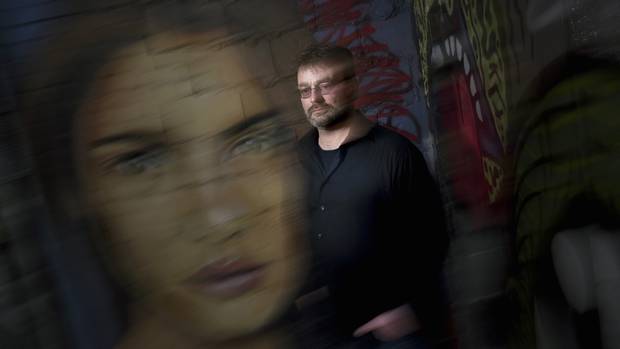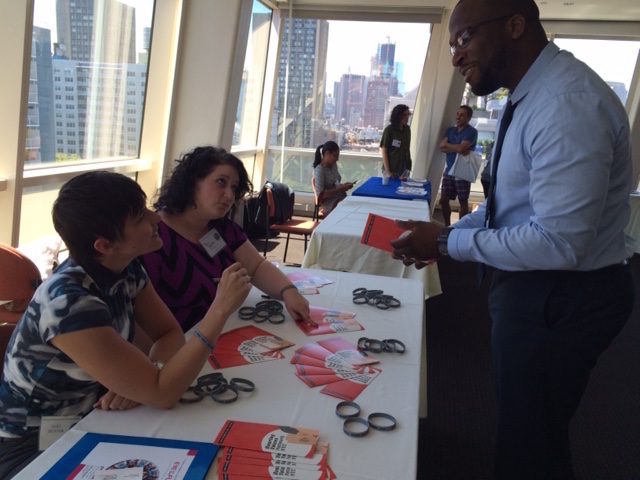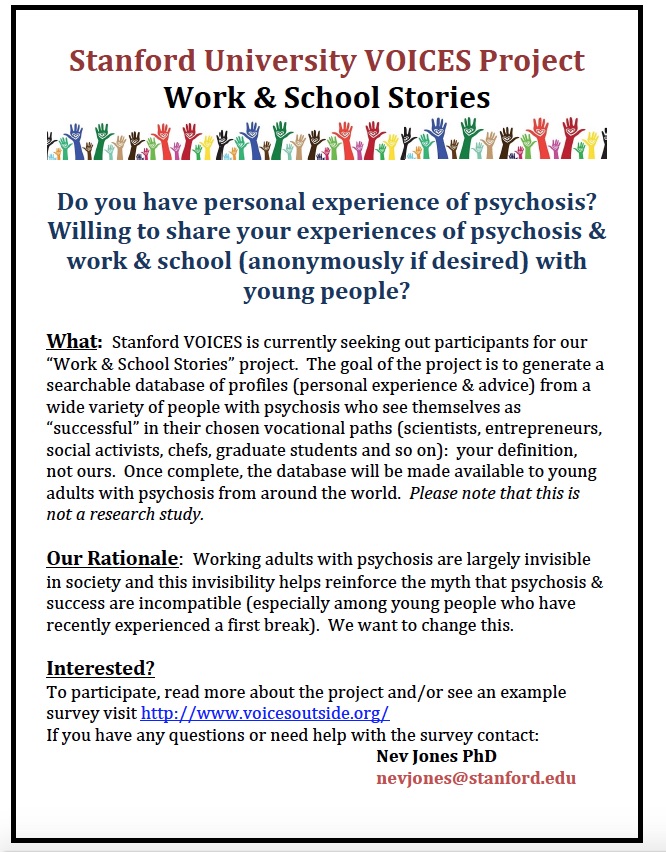
The Globe and Mail; Wency Leung, 7/12/2015
Over the years, the 53-year-old Toronto resident has learned to live with a constant symphony of sounds without the use of medication. He listens to his voices, converses with them and has even come to appreciate the chatter.
“I would be regretful if it went away,” says Healey, who began hearing phantom sounds at the age of six. “It’s just kind of part of me and I’ve made peace with that.”
As researchers are discovering, auditory hallucinations are neither rare, nor necessarily a sign of serious mental illness. A large study published in the journal JAMA Psychiatry in May, involving 31,000 respondents from 18 countries, found as much as five per cent of the general population experiences auditory or visual hallucinations at some point in their lives. Scientists, health professionals and people who experience them are beginning to view them as a meaningful part of the human experience and not just as a problem that needs to be treated or eliminated.
Auditory hallucinations are being tackled with more empathy in popular culture too. Films, such as last year’s Birdman and Love & Mercy, a recent biopic of The Beach Boys singer/songwriter Brian Wilson, break away from stereotypical portrayals of auditory hallucinations in horror or violent crime genres. Meanwhile, celebrities including musicians Pete Townsend, Carlos Santana, and Jennifer Hudson have openly discussed finding inspiration in music and voices only they can hear. (In his 2012 memoir Who I Am, Townsend recounts a childhood boating trip, during which he mysteriously began hearing “violins, cellos, horns, harps and voices.” The frontman for the rock band The Who reveals it’s an auditory experience he’s always tried to recreate.)
“Hearing voices has for a long time – perhaps for hundreds of years – been regarded as a sign of madness,” says Dr. Angela Woods, a co-director of the interdisciplinary research project Hearing the Voice at Durham University in Britain. But, she explains, “I think when you start to look more closely at the experience itself … and if you start to you really talk to people, you get a much more complex picture about what’s going on and how that can be understood.”
Auditory hallucinations are perhaps most commonly recognized as psychotic episodes symptomatic of schizophrenia. But they’re also linked to other mental illnesses, including depression, anxiety and post-traumatic stress disorder, as well as substance use.
Stress, such as that following the death of a loved one, can be a trigger. Some people who are otherwise healthy report hearing phantom sounds, too, even if only as one-time incidents.
Rather than looking solely at objective measures, such as the prevalence of the phenomenon, Woods and her research team, in a study published online by the journal Lancet Psychiatry in March, examined what it feels like for people to hear voices.
While some of the more than 150 participants described actual audible experiences, others perceived them as “thought-like,” but nonetheless coming from a source separate from themselves. Still others reported hearing voices as a mix of the two.
Most participants heard multiple voices, each with their own characters or personalities. Contrary to popular belief, not all of these experiences were negative or menacing. Some hallucinations were pleasant, or even downright mundane.
According to one participant’s account of hearing voices: “They usually tell me to do things, but not dangerous things. Like they’ll tell me to take out the garbage or check the lock on the window or call someone.”
Research such as this is part of a growing effort to not only examine how auditory hallucinations occur, but to understand the experiences of people who have them and to figure out how to interpret those experiences.
Woods notes that the idea of listening to what phantom voices had to say was once common in the field of psychiatry, at a time when psychoanalysis was popular.
The aim was to find meanings behind the hallucinations, teasing out their links to patients’ past traumas.
That changed during the latter half of the 20th century with the rise of biological psychiatry, a branch of psychiatry that focused on physical causes of and treatments for mental illness.
With biological psychiatry, “it was explicitly discouraged to ever talk to a patient about what the voices were saying because people felt that that was colluding in a kind of hallucinatory or delusional world that wasn’t real,” Woods says.
“The task of a psychiatrist was to shift people to a conventional reality. And if you inquired too deeply into their reality, you weren’t going to help with that task.”
These days, Woods says, the momentum is starting shifting toward a more holistic approach, thanks to groups such as the International Consortium of Hallucination Research, which promotes collaboration between scientists, mental-health professionals and individuals who’ve experienced hallucinations, and the international peer support movement Hearing Voices Network, which champions new perspectives on the phenomenon.
While not all of us literally hear them, we all have an inner dialogue or memories of conversations we’ve had in the past, Dr. Sean Kidd, psychologist-in-chief at Toronto’s Centre for Addiction and Mental Healthsays.
For the most part, we perceive these voices and sounds to be generated by ourselves. But in people struggling with psychosis, this connection is somehow lost and these voices and sounds are experienced as something other than oneself, Dr. Kidd explains, noting researchers have discovered differences in the mechanisms of brain areas relevant to distinguishing this distinction.
Another type of auditory hallucination may occur in individuals who experience hearing loss, akin to phantom limb pain, Dr. Danilo Vitorovic, assistant professor of neurology at the University of Vermont says.
In 2013, Vitorovic encountered the curious case of a 60-year-old patient with a history of hearing loss who suddenly began hearing phantom songs, as though someone had turned on a radio.
In cases such as these, the brain perceives sensations even without input from the body, he says. “The brain starts playing on its own.”
But for Healey, the science behind what causes auditory hallucinations is less of a concern than how to cope with them. To this end, he started a Toronto Hearing Voices group, part of the international Hearing Voices Network, about five years ago. He’s tried using anti-psychotics, which helped him sleep better, but didn’t quieten his voices.
What has worked instead, he says, is to hear them out. His hallucinations now act as a barometer for how well he’s coping with whatever’s going on in his life. Even the negative voices serve a purpose; they alert him when he needs to address a problem before it becomes overwhelming, he explains.
“It’s just part of life. It can be a really difficult part of life, but it can help you decipher … what’s going on and what you can do,” he says.

 hat is the Hearing Voices Network up to in the USA, and how is it acting to spread this new model of support?
hat is the Hearing Voices Network up to in the USA, and how is it acting to spread this new model of support?

